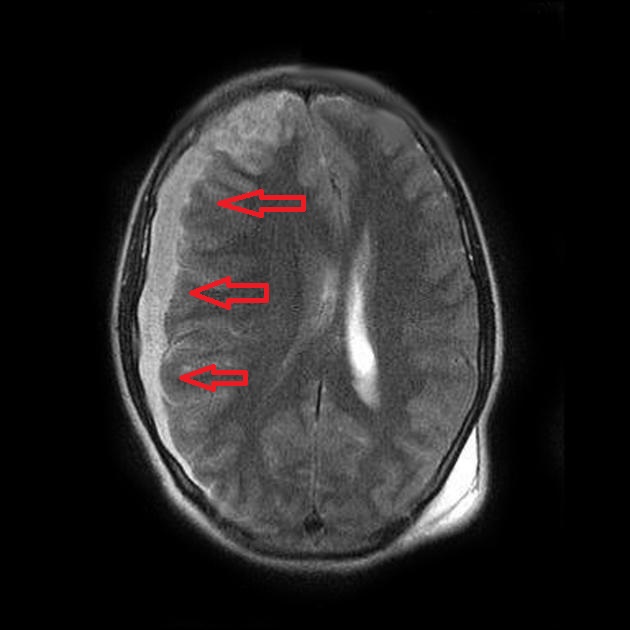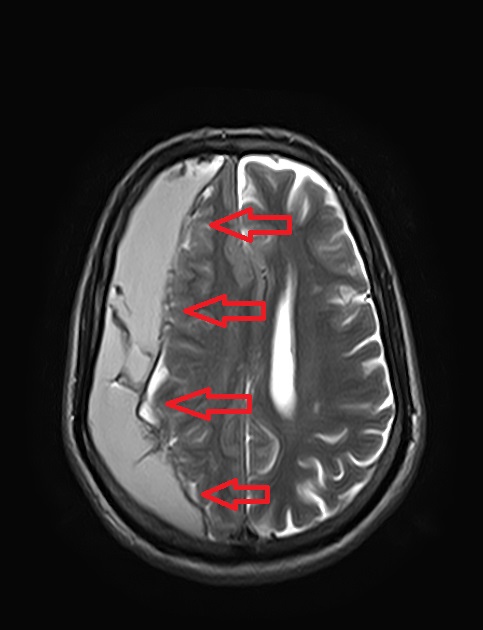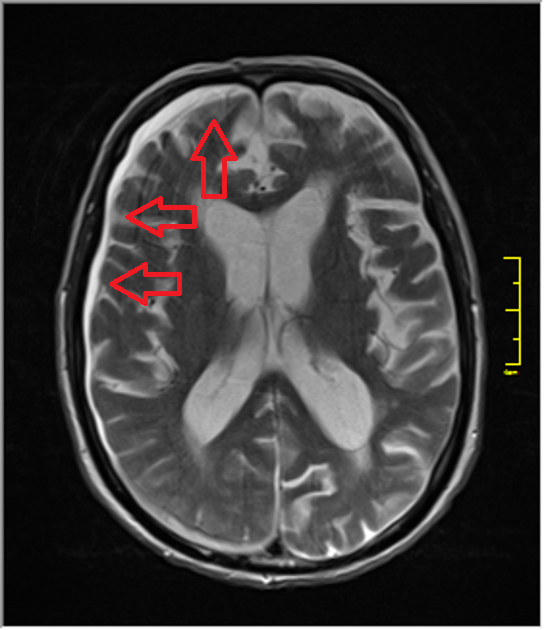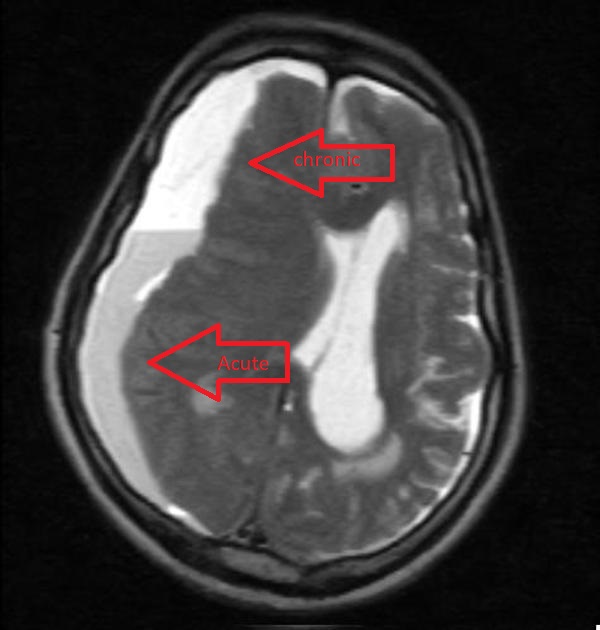Subdural hematoma MRI: Difference between revisions
Jump to navigation
Jump to search
No edit summary |
No edit summary |
||
| (9 intermediate revisions by the same user not shown) | |||
| Line 5: | Line 5: | ||
==Overview== | ==Overview== | ||
Brain MRI may be helpful in the diagnosis of subdural hematoma. Findings on MRI diagnostic of subdural hematoma include crescent shape hematoma which has different intensity in different phases. | |||
==MRI== | ==MRI== | ||
Brain MRI may be helpful in the diagnosis of subdural hematoma. Findings on MRI diagnostic of subdural hematoma include:<ref name="CarrollLavine2017">{{cite journal|last1=Carroll|first1=Jason J.|last2=Lavine|first2=Sean D.|last3=Meyers|first3=Philip M.|title=Imaging of Subdural Hematomas|journal=Neurosurgery Clinics of North America|volume=28|issue=2|year=2017|pages=179–203|issn=10423680|doi=10.1016/j.nec.2016.11.001}}</ref> | |||
=== Acute subdural hematoma: === | |||
* Crescent shape hematoma | |||
* T1: Isointense to gray matter | |||
* T2: Hypointense to gray matter | |||
[[File:Acute subdural hematoma.jpg|500px|none|thumb|https://radiopaedia.org/cases/acute-subdural-haemorrhage-on-mri]] | |||
=== Subacute subdural hematoma: === | |||
* | * Crescent shape hematoma | ||
*[ | * Hyperintense in T1 and T2 | ||
[[ File:Subacute subdural hematomaa.jpeg|500px|none|thumb|https://radiopaedia.org/cases/subacute-subdural-haematoma-7?lang=us]] | |||
=== Chronic subdural hematoma: === | |||
* Crescent shape hematoma | |||
* Isointense to CSF in T1 and T2 | |||
[[File:81c080c7f013c25f665f1f49c03f56 big galleryy.BMP|500px|none|thumb|https://radiopaedia.org/cases/chronic-subdural-haematoma]] | |||
=== Acute on chronic subdural hematoma: === | |||
* In case of rebleeding, it appears hyperintense to CSF in T1 and hypointense to CSF in T2 | |||
[[File:Acute on chronicc.JPG|500px|none|thumb|https://radiopaedia.org/cases/subdural-haemorrhage-acute-on-chronic-mri-2]] | |||
[[File:Acute on | |||
==References== | ==References== | ||
Latest revision as of 17:44, 10 June 2019
|
Subdural Hematoma Microchapters |
|
Diagnosis |
|---|
|
Treatment |
|
Case Studies |
|
Subdural hematoma MRI On the Web |
|
American Roentgen Ray Society Images of Subdural hematoma MRI |
Editor-In-Chief: C. Michael Gibson, M.S., M.D. [1]; Associate Editor(s)-in-Chief: Fahimeh Shojaei, M.D.
Overview
Brain MRI may be helpful in the diagnosis of subdural hematoma. Findings on MRI diagnostic of subdural hematoma include crescent shape hematoma which has different intensity in different phases.
MRI
Brain MRI may be helpful in the diagnosis of subdural hematoma. Findings on MRI diagnostic of subdural hematoma include:[1]
Acute subdural hematoma:
- Crescent shape hematoma
- T1: Isointense to gray matter
- T2: Hypointense to gray matter

Subacute subdural hematoma:
- Crescent shape hematoma
- Hyperintense in T1 and T2

Chronic subdural hematoma:
- Crescent shape hematoma
- Isointense to CSF in T1 and T2

Acute on chronic subdural hematoma:
- In case of rebleeding, it appears hyperintense to CSF in T1 and hypointense to CSF in T2

References
- ↑ Carroll, Jason J.; Lavine, Sean D.; Meyers, Philip M. (2017). "Imaging of Subdural Hematomas". Neurosurgery Clinics of North America. 28 (2): 179–203. doi:10.1016/j.nec.2016.11.001. ISSN 1042-3680.